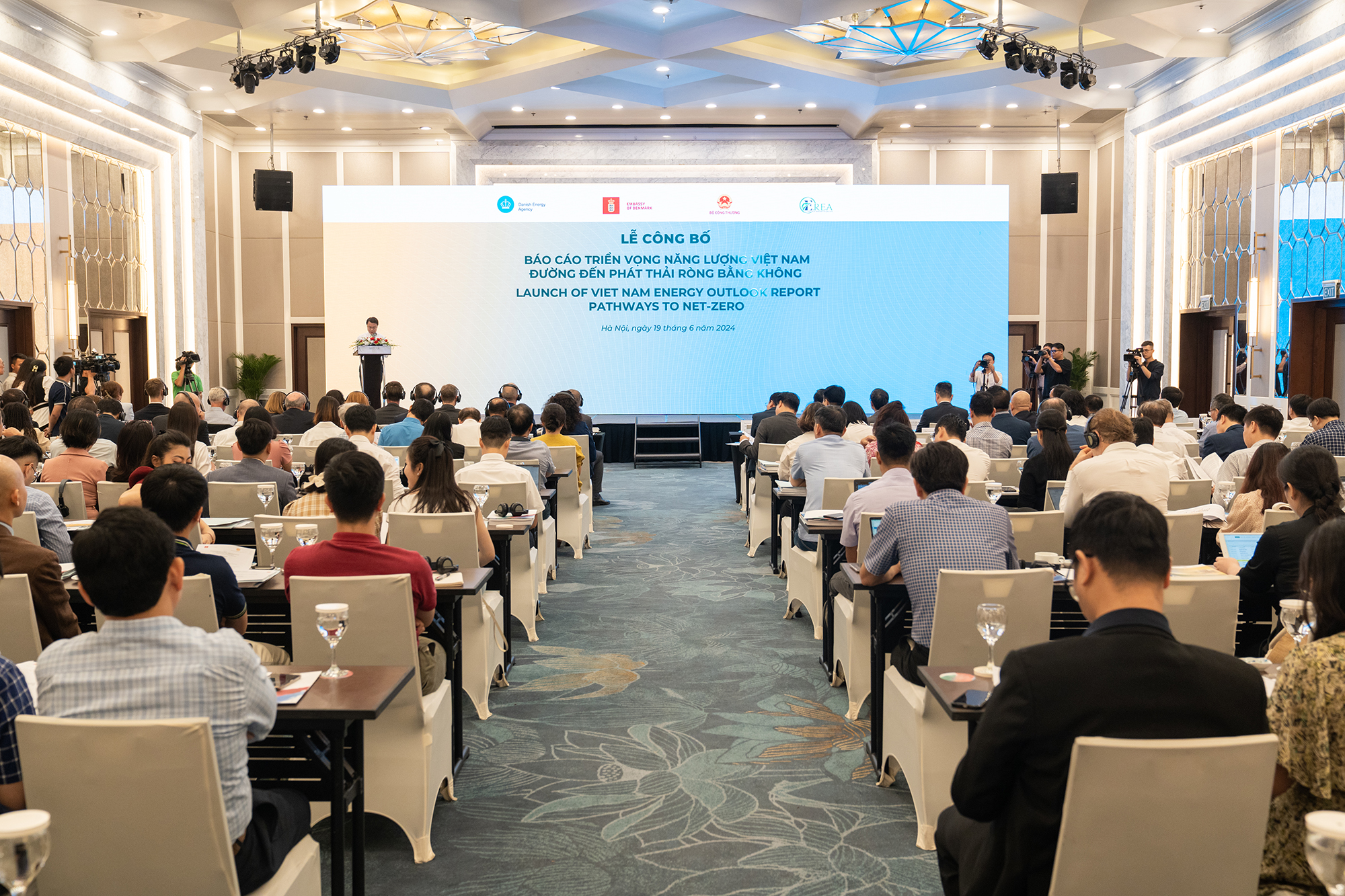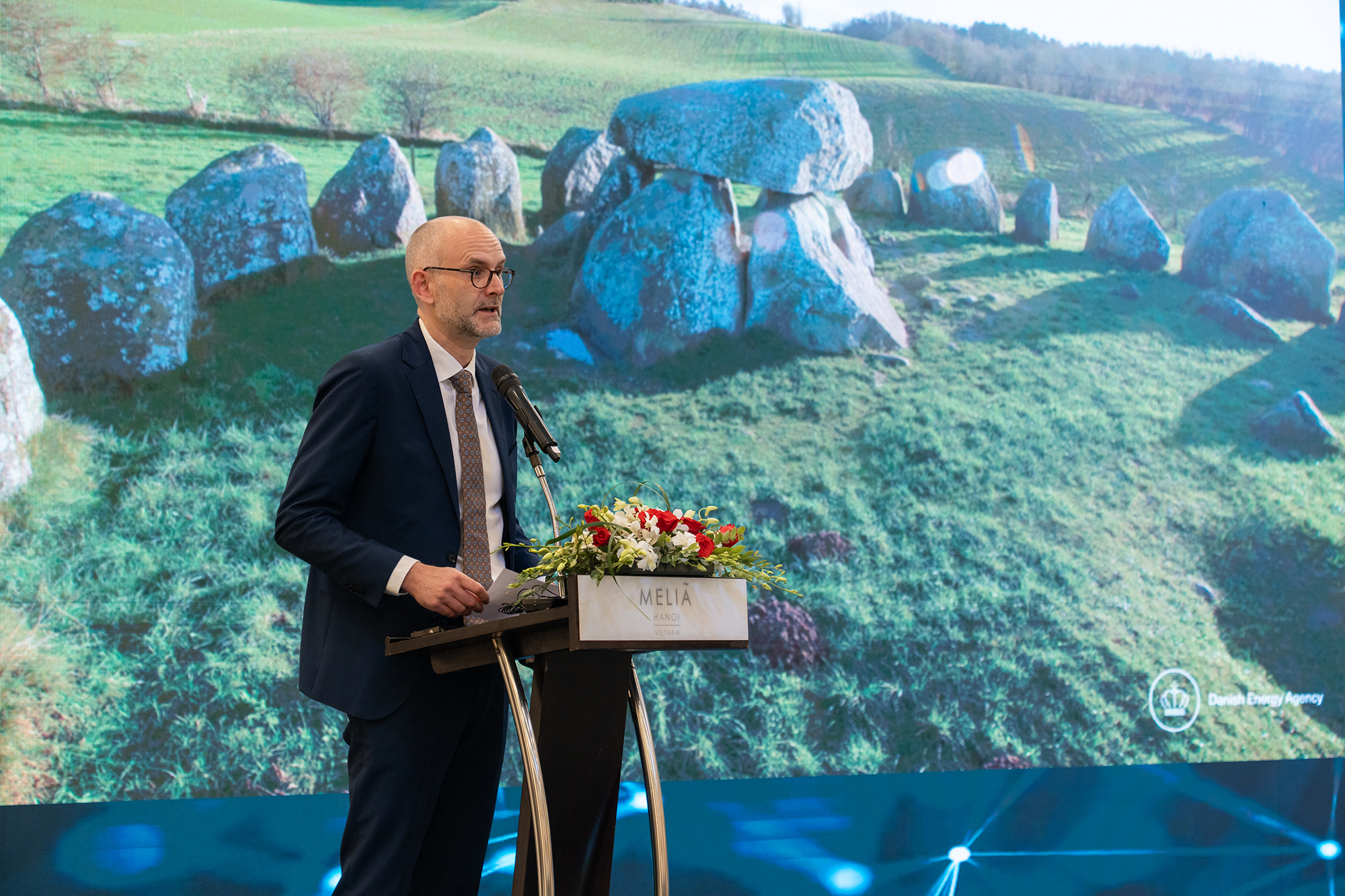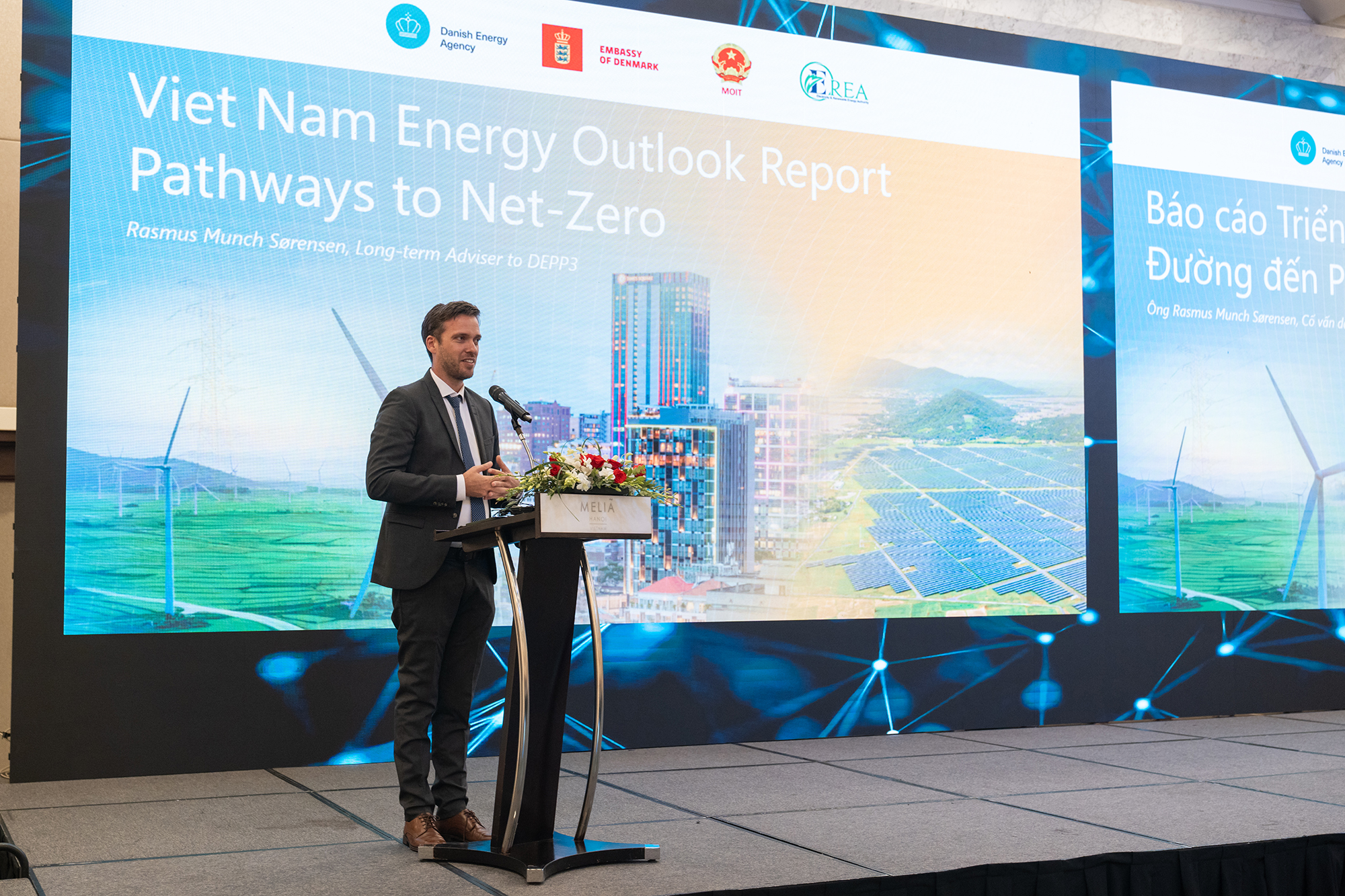
Today, the Viet Nam Energy Outlook Report – Pathways to Net Zero (EOR-NZ), developed in close cooperation between the Electricity and Renewable Energy Authority (Viet Nam), the Danish Energy Agency (DEA) and the Embassy of Denmark was presented in Hanoi. One of the report’s main findings is that reaching its 2050 climate neutrality target is not only technically feasible for Viet Nam, but also the most cost- effective scenario. However, to achieve the 2050 target, Viet Nam’s CO2 emissions should peak already by 2030 and the green energy transition needs to happen urgently and at a faster pace than previously.
The launch of the Viet Nam Energy Outlook Report – Pathways to Net Zero (EOR- NZ) took place under the chairmanship of the Ministry of Industry and Trade of Viet Nam, the Danish Embassy in Viet Nam, and the Danish Energy Agency. The report is the fourth in a series of outlook publications under the Danish – Vietnamese Energy Partnership Programme, a long-term partnership between Denmark and Viet Nam on the green energy transition. The report presents scenarios for the development of the Vietnamese energy system towards 2050, focusing on analyzing realistic pathways for Viet Nam to achieve its net-zero commitment by 2050.
The message of the report is clear: the most beneficial and cost-effective way to support Viet Nam’s sustainable growth is through a massive expansion of solar and wind power, as well as the electrification of transportation and industry. It is critical to accelerate the green energy transition in Viet Nam now to avoid huge unnecessary costs. Particularly, the report also puts forward concrete recommendations on how Viet Nam can achieve climate neutrality by 2050 and ensure that the CO2 emissions peak by 2030.

“Viet Nam and Denmark both have ambitious climate goals. The Viet Nam Energy Outlook – Pathways to Net-Zero is a result of our strong collaborative efforts addressing green transition and climate change. The report shows that Viet Nam has a remarkable potential for renewable energy, and illustrates how a green transition can drive growth, energy security and sustainable development for the Vietnamese society”, said the Director General of the Danish Energy Agency Kristoffer Böttzauw.
In recent years, Viet Nam has experienced strong economic growth and the growing economy has led to significant increase in energy consumption, as well as in CO2- emissions. It is vital for Viet Nam’s sustainable development that the country, being one of the fastest growing economies in Southeast Asia, is able to decouple economic growth and energy consumption and develop a more sustainable and green energy system by investing in renewable energy and energy efficient technologies.
Vice Minister of Trade and Industry Nguyen Hoang Long said: “Collaborative initiatives and programs with Denmark over the past years have actively contributed to the implementation of Viet Nam’s objectives of ensuring security of supply for the need of social-economic development while developing the energy sector in a green and sustainable direction. We always appreciate the support of the Danish government so far and hope that, in the coming time, both sides shall continue our close collaboration to effectively implement energy cooperation programmes.”

Ambassador of Denmark Nicolai Prytz added: “The Energy Outlook Report – Pathways to Net Zero is a key output of our long-term energy partnership with Viet Nam, a crucial part of the Viet Nam – Denmark Green Strategic Partnership. I hope that our Vietnamese partners will find the report a valuable resource to inform decision-making processes and support Viet Nam in shaping its green energy transition. Achieving Viet Nam’s net-zero goal will require swift, intensified and sustained efforts. This is not just vital in terms of addressing a growing energy demand, but also for the attraction of FDI as access to renewable energy is becoming more and more crucial in investment decisions. Denmark is committed to continue supporting Viet Nam on this journey.”

With enormous potential for solar power, onshore and offshore wind, Viet Nam is well positioned to transform its energy sector from fossil fuels to renewable energy and leverage its national resources. The report demonstrates how Viet Nam through massive expansion of renewable energy, along electrification of its industry and transport sectors, can secure a cost-efficient green transition and reach its target of net-zero emissions in 2050, while also reducing Vietnam’s dependence on energy imports. According to the report analysis, an additional 56 gigawatts of renewable energy (17 GW onshore wind and 39 GW solar) needs to be added by 2030 if Viet Nam is to stay on track for carbon peak by 2030 and climate neutrality by 2050. Any delays in the transition will be costly, not least from increased climate change impacts. Integrating such vast amounts of fluctuating power generation in the power grid will require deliberate actions too. The report also shows how in the near term, the country’s coal-fired power plants must become more flexible, so that coal power can be turned down to give green power priority in the electricity supply while still providing backup capacity until storage and other solutions can be implemented.

To fulfil Viet Nam’s ambition to build 84 GW of offshore wind by 2050 requires strong commitment and immediate actions. In particular, accelerating the issuance of a clear and predictable legal framework is essential to attract the sizeable investments, which are needed for the development of the offshore wind industry in Viet Nam. Along this line, the report recommends that Viet Nam starts designating offshore areas, preparing port infrastructure, and strengthening the power grid.
With the green transition of the energy sector now being one of the top priorities in Vietnam’s green transition agenda, the report received a lot of attention from Vietnamese policy-makers, experts, academia and the private sector.

Following the launch of the report, a roundtable with Vietnamese decision-makers was held on the same day. Chaired by leader of Electricity and Renewable Energy Authority, Ambassador of Denmark Nicolai Prytz and Director General of Danish Energy Agency Mr. Kristoffer Böttzauw, the participants discussed key findings and policy implications of the report, including barriers to scaling up investments in green energy, the importance of green economic growth and the role of state-owned enterprises in the green transition.

BACKGROUND INFORMATION
The Danish-Vietnamese Energy Partnership
– The Danish Energy Agency cooperates with the Ministry of Industry and Trade (MOIT) in Viet Nam through the joint Energy Partnership Programme between Viet Nam and Denmark (DEPP). The first phase was from 2013 to 2017, focusing on low carbon development in industrial and building sectors; the second phase running from 2017 to 2020 covered energy efficiency in the industrial sector, integration of renewable energy into the power grid and long-term scenario modeling of the energy sector.
– The on-going phase three of the Danish Energy Partnership Programme (DEPP III) is a five-year program from 2021 to 2025. It includes offshore wind as a component and a work stream focused on developing economic incentive schemes for energy efficiency improvements in the industrial sector in Viet Nam. DEPP III also continues to focus on long-term scenario modeling with the biennial Energy Outlook Report.
– The Danish Energy Agency’s Centre for Global Cooperation partners with 24 countries, that in total account for more than 70% of the global CO2 emissions. The aim is to share Danish experiences on shaping an energy system that combines a green, low-carbon and reliable energy supply with economic growth.
(Source: Embassy of Denmark)




